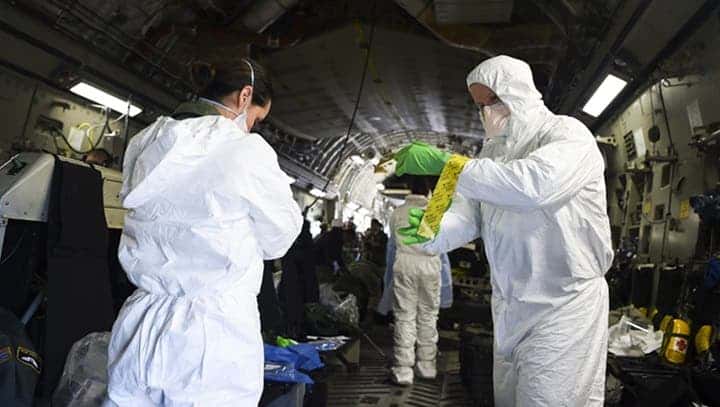You might have heard that people aged 60 or older are the most vulnerable to complications caused by COVID-19 — a new illness that can affect the lungs and airways caused by the novel coronavirus SARS-CoV-2. This is still valid. However, adults of all ages can get seriously sick and even die, according to a preliminary report released by the U.S. Centers for Disease Control and Prevention (CDC).

The CDC researchers analyzed data on the first significant wave of coronavirus infections in the United States, which included 2,449 patients of all ages. These cases did not include imported cases, such as people sick with COVID-19 who had returned to the country from trips in China or Japan.
According to the CDC, the age distribution of these domestic infections with the new coronavirus looks as following:
- 6% were 85 and older
- 25% were between 65 and 84
- 18% were aged 55 to 64
- 18% were aged 45 to 54
- 29% were aged 20 to 44
- only 5% were aged 19 and younger
The report did not offer information about any risk factors such as any underlying factors. Previous studies suggest that individuals suffering from chronic diseases such as cancer, diabetes, cardiovascular disease, respiratory disease, and autoimmune disorders are at high risk of developing severe or critical respiratory problems related to COVID-19.
Of 508 patients that required medical care in the hospital, the researchers found that:
- 9% were 85 years old or older
- 26% were between 65 and 84 years old
- 17% were between 55 and 64 years old
- 18% were between 44 and 54 years old
- 20% were between 20 and 44 years old
- Less 1% were 19 years old or younger
“These preliminary data also demonstrate that severe illness leading to hospitalization, including I.C.U. admission and death, can occur in adults of any age with COVID-19,” the CDC researchers wrote.
Of the 121 patients who were admitted to intensive care units, 50% were under the age of 65, while 12% were aged 20-44. No intensive care admissions or deaths were reported among those aged 19 or younger.
The CDC found that 80% of deaths were among adults 65 years or older, with the highest percentage of severe outcomes registered among those 85 or older (their case fatality rate was between 10% and 27%).
When it comes to the risk of serious illness and death, the new CDC report mirrors other studies elsewhere that found older age groups are the greatest risk. However, unlike other studies, the CDC found that people of all ages can get very sick with COVID-19.
“The risk for serious disease and death in COVID-19 cases among persons in the United States increases with age. Social distancing is recommended for all ages to slow the spread of the virus, protect the health care system, and help protect vulnerable older adults. Further, older adults should maintain adequate supplies of nonperishable foods and at least a 30-day supply of necessary medications, take precautions to keep space between themselves and others, stay away from those who are sick, avoid crowds as much as possible, avoid cruise travel and nonessential air travel, and stay home as much as possible to further reduce the risk of being exposed. Persons of all ages and communities can take actions to help slow the spread of COVID-19 and protect older adults,” the report concludes.
Many young people are less worried about COVID-19 because they’ve heard it’s highly unlikely for them to develop severe symptoms. This report suggests this is not true at all.
If not for the sake of their parents, teachers, and other elderly members of their community, the youth should be wary of the coronavirus because of the dangers it poses to themselves.
Visit our official coronavirus updates page for the United States with real-time info on cases, maps, and charts on the COVID-19 crisis.
Coronavirus precautions
- Wash your hands. You’ve heard this a million times, and there’s a reason for it: it works. Soap and water is your best option, but sanitizer also works if applied correctly. Wash hands thoroughly for 20+ seconds.
- Avoid touching your face with unwashed hands.
- Disinfect commonly touched objects — especially your phone, but also things like doorknobs.
- Clean your room and bathroom. This is is good hygienic practice in general, but a preliminary study suggests that disinfecting your room is effective at removing the virus. Here is a list of EPA-approved disinfectants.
- Cough and sneeze in your elbow or in a tissue that you immediately dispose of safely.
- If you can work from home, do that.
- Practice (temporary) social distancing. Avoid large gatherings, try to stay 1+ meter (3+ feet) away from people.
- Plan ahead, but be considerate. Consider some preparations in anticipation of social distancing or supply chain shortages, but don’t take more than you need and be considerate of others in your community. Your best chance of not getting sick is if your local community doesn’t get sick.
- Be aware, prepared, but not panicked.


